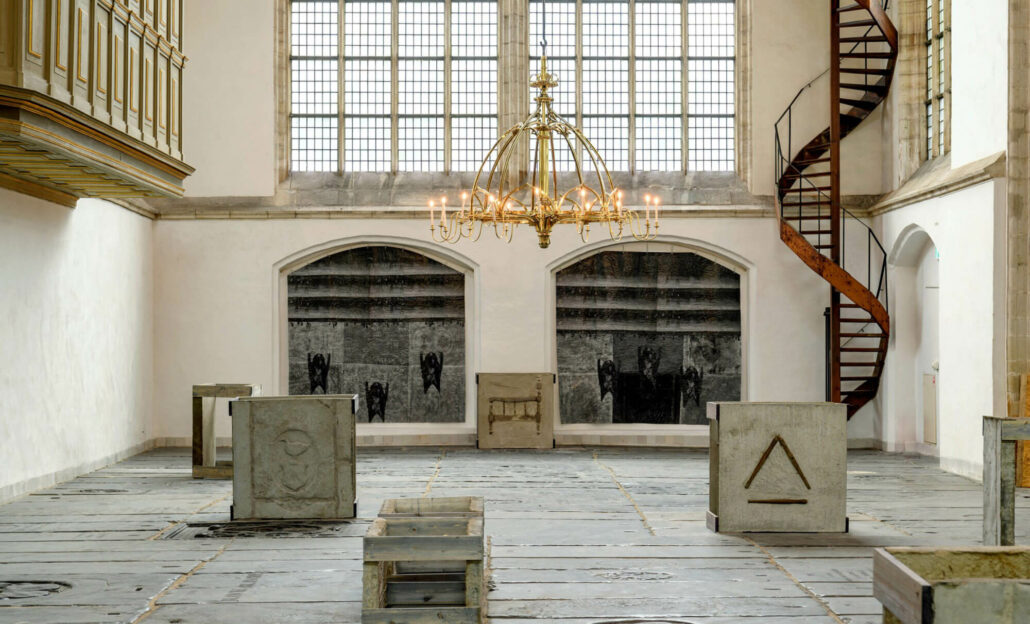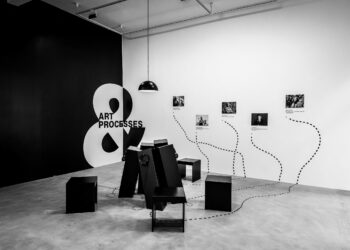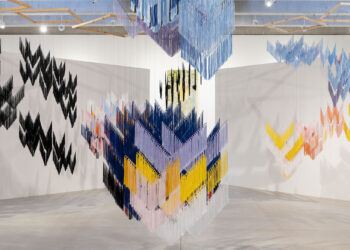Mahama created a new, space-filling installation especially for Amsterdam’s oldest building. Walk through the centuries-old church building and discover the shared history of ancient places connected by trade networks, migration flows and globalisation.

Installation view of ‘Garden of Scars’. Photographer: Mike Bink
Commissioned by the Oude Kerk, Mahama has been working on a new large-scale site-specific installation for the past two years. ‘Garden of Scars’ connects the history of the Oude Kerk with an international (historical) context. Scattered through the building are hundreds of sculptures. The sculptures are composed of casts he made from the tombstones in the Oude Kerk and the floors of Fort Elmina (1482) on the coast of Ghana, among others. The fractures, scratches and cracks in the sculptures depict a history of failure, repair, repair.
Walk through the centuries-old church building and discover the shared history of thousands of Amsterdam residents buried here over time and the colonial history of Mahama’s homeland Ghana. The 3000m2 floor area of the Oude Kerk is formed by tombstones. There are many life stories and memories associated with them that people identify with to this day. Mahama sees the gravestones in the Oude Kerk as a form of collective memory, and questions the social and political aspects of its formation.
He links the family histories of the merchants, captains, mayors buried in the Old Church with the traces of the history of the ancient (Dutch) forts along the coast of Ghana where people suffered the (consequences of) colonial trade in Africa. Castles and forts were built from the 15th century on the West African coast by traders from Europe, including the Dutch. Fort Elmina, for instance, initially served the gold trade and later played an important role in the development of the Trans-Atlantic slave trade. Mahama aims to make this shared history visible. Global networks linked to both places and continuing into the present day are made palpable.
Mahama’s large-scale installations touch on important issues of our time such as the social and cultural consequences of global trade and migration. His work often uses existing materials, allowing him to make visible shared histories of places that are historically distant from each other. He calls himself a time traveller, showing different places and perspectives simultaneously. Mahama became known for his installations with burlap sacks, which for him symbolise the bad side of globalisation: they are made in Asia, used to export cocoa from Ghana, return to Ghana as a waste product.
The exhibition will be on view from the 5th of November, 2022, until the 19th of March, 2023. For more information, please visit Oude Kerk.



